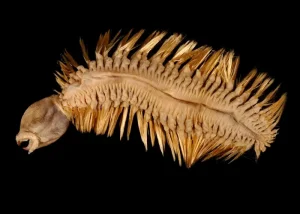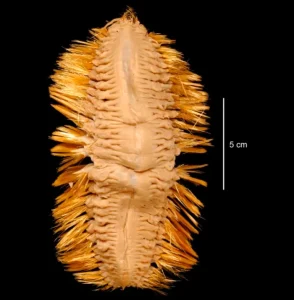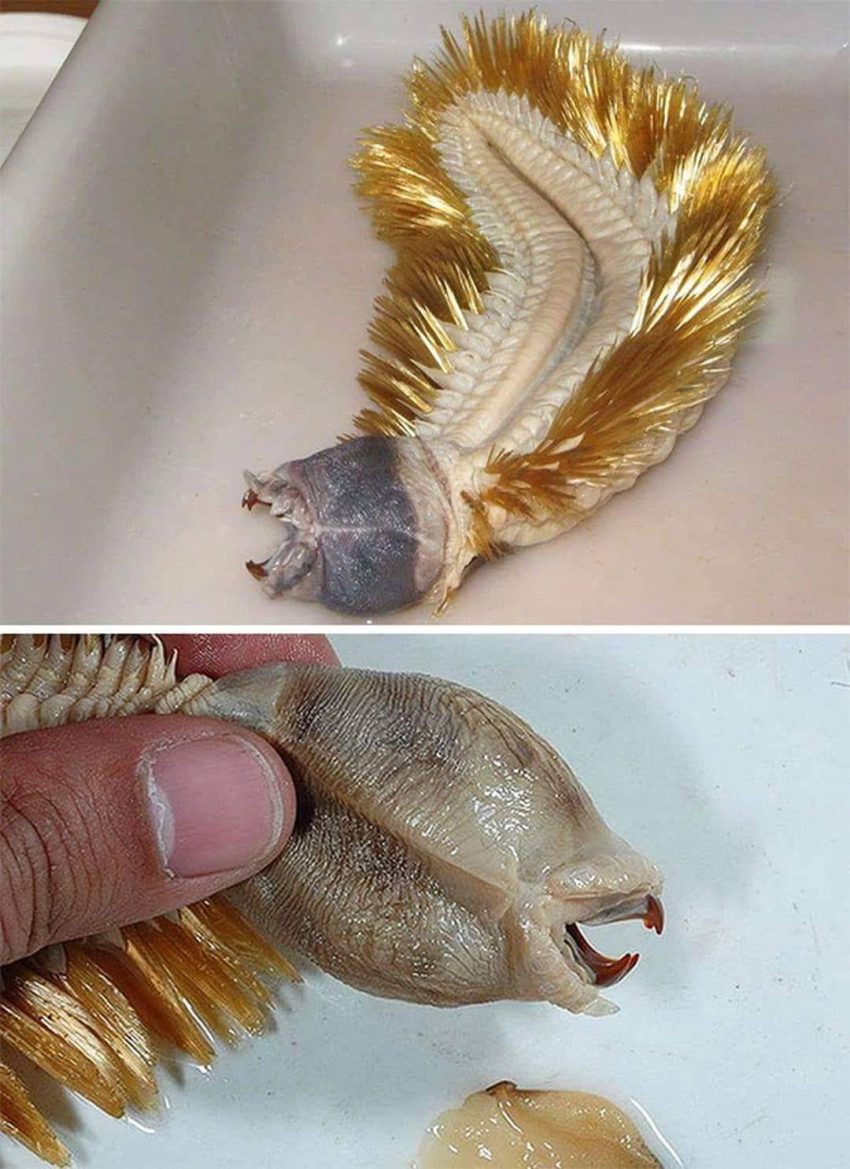A peculiar marine worm that was discovered in the freezing waters close to Antarctica is attracting a lot of attention on the internet, and it is not hard to understand why. This creature has the appearance of a Christmas ornament that was taken straight from a horror film. It has a body that is oval in shape and is coated in golden bristles that shimmer. It also has a gaping maw that is lined with teeth.
Eulagisca gigantea is the name of the worm, which belongs to the family of polychaetes and is commonly referred to as bristle worms because to the characteristic spikes that are found on their exteriors. This peculiar worm has been living in the Southern Ocean, close to Antarctica, for a very long time, despite the fact that it may have lately gained widespread attention as a result of striking photographs that were posted on social media.
An Investigation into the Unusual Predator
The Eulagisca gigantea possesses a peculiar “head” that is actually a retractable pharynx, and it is approximately 8 inches in length. This part of its throat spreads outward as it is feeding, exposing its sharp teeth, which could be seen as a hint at its predatory tendencies. According to the Smithsonian Museum of Natural History, this neck extension can reach up to two inches in length, which enables the worm to forage for food or to hunt other aquatic organisms before consuming them.
This creature’s bristles, which emit a glittering gold light, have the potential to fulfil a variety of functions, including swimming, defence, and creeping around the seafloor. According to the World Register of Marine Species, scientists have not conducted considerable research on the biology or behaviour of this deep-sea species since it was originally discovered in 1939. As a result, a significant portion of this species’ characteristics continue to be a mystery.

Diversity in the Deep Sea
There are a great many different kinds of polychaete worms, which is the group that this particular organism belongs to. These worms can be found in a wide range of settings, from shallow coral reefs to extreme hydrothermal vents, and they come in a wide variety of shapes, sizes, and colours. According to the Monterey Bay Aquarium Research Institute (MBARI), there are about 8,000 species of polychaete worms and 80 families of polychaete worms. However, researchers estimate that the true number of polychaete worms may be far greater.
DNA analysis was employed in a study that was published in Royal Society Open Science in 2016. The researchers estimated that the number of marine worm species that have not yet been discovered might be twice as high as the current estimations. Even though they appear to be weird to human eyes, these animals are extremely important to the ecosystems of the ocean and provide valuable insights into the secrets of life in the deep water.

Samples of the Viral
A specimen of Eulagisca gigantea was recently displayed in a post on Facebook that highlighted the species. The specimen was recovered from a depth of 1,706 to 2,198 feet in the Antarctic Ocean. The photograph captured the creature’s protruding jaws as well as the bristles’ striking golden tint, which caused viewers to feel a mixture of fascination and dread.
In spite of the fact that it has an appearance that is reminiscent of an extraterrestrial, organisms such as Eulagisca gigantea are essential for comprehending the richness of the deep sea. In the course of their ongoing exploration of the ocean’s depths, researchers have made discoveries that serve to remind us of the extraordinary and peculiar life forms that are thriving deep below the waves.
